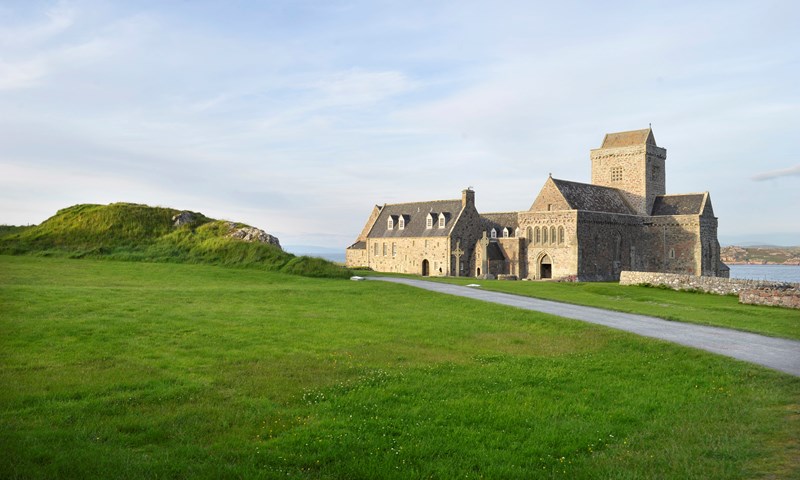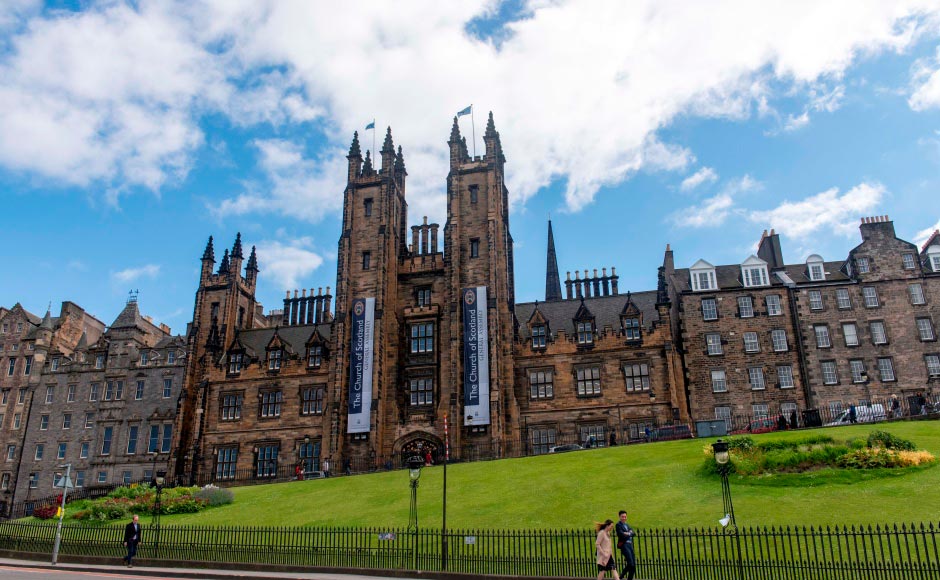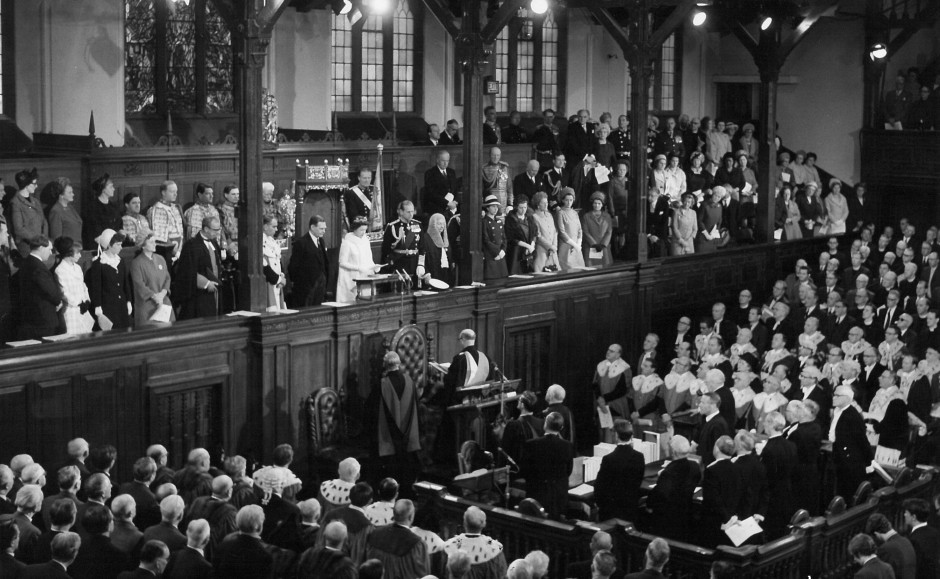History

A brief overview of the founding and principal events in the history of the Church of Scotland.
Although Christianity has existed in Scotland since before the sixth century AD, the origins of the Church of Scotland lie in the Reformation movement that began in the 16th century.
Early Critics
The Medieval Church had great power, but it also had its critics, even well before the Reformation. In Ayrshire, the "Lollards of Kyle" began questioning church teachings in the 14th century. They rejected traditional practices and beliefs, such as fasting and transubstantiation, and supported the rights of priests to marry and for people to read the Bible and worship in their own language.
In 1517 Martin Luther nailed his Ninety-Five Theses to the door of All Saints Church in his native Wittenberg. Luther's particular focus was the Catholic Church's selling of indulgences to fund the re-building of St Peter's in Rome. Thanks to the recently invented printing press, Luther's ideas quickly spread far and wide. In Scotland they were embraced by people such as Patrick Hamilton, who had studied in Germany, as well as George Wishart and his sword-bearer, John Knox. Knox had spent many years in Protestant England and Geneva, where he was strongly influenced by the teachings of John Calvin.
The Reformation of 1560
Following a religious revolution in large part incited by Knox, he and five other ministers were called upon to draw up a new confession of faith. They presented it to the Scottish Parliament, which voted and approved it in August 1560. Four days later, the Parliament passed acts that rejected the authority of the Pope in Scotland, condemned all doctrine and religious practice contrary to the reformed faith, and outlawed the Mass.
Knox's aim was reform along the lines of Calvinist doctrine, not the creation of a new Church. Priests became ministers, bishops served as superintendents (ministers with a regional remit) and new structures were put in place.
In 1592, a full Presbyterian system was adopted by the Scottish Church and Parliament. This comprised an ascending series of courts made up of ministers and elders: namely, Kirk Session, Presbytery, Synod and General Assembly.
The Church Under the Stuart Kings
The crowns of Scotland and England were united under James VI and I in 1603. His aim was Church uniformity, on Episcopalian lines, north and south of the border. Consequently, during his reign and that of his successors Charles I and II, the Scottish Church alternated between Presbyterianism and Episcopacy.
The Stewart kings were strong believers in their divine right to rule both Church and State, but in Scotland they had to reckon with the Covenanters who believed only Jesus Christ and God could sit at the head of the Church. Matters came to a head in the 1630s when John Knox's Book of Discipline was replaced by The Book of Canons, which excommunicated anyone who denied the King's supremacy in church matters. The following year, a new Book of Common Prayer sparked rioting which, according to legend, began when a woman named Jenny Geddes threw a stool at the minister during a service at St Giles Cathedral in Edinburgh. Following the riots, in 1638 representatives from all sections of Scottish society signed the staunchly Presbyterian National Covenant, pledging resistence to liturgical "innovations".

In 1647, both the Convenanters and the English Parliamentarians agreed to the Westminster Confession of Faith. Although eventually set aside in England, this remains the basis of doctrine in the Church of Scotland.
Debates and outright battles over the role, structure, and doctrine of the Church continued for most of the rest of the 17th century. In 1688 the Catholic King James II was overthrown and replaced with his Protestant daughter and son-in-law, Mary and William. In November 1690, the General Assembly met and rejected the episcopacy that had been forced on the Church by the Stuart kings. The Settlement of 1690 thus finally settled the reformed Scottish Church as Presbyterian.
Secession and Disruption
In 1707 the Parliaments of Scotland and England united and it was not long before policies emerged with unsettling consequences for the 1690 settlement. In 1711 legislation was enacted restoring the right of patronage which had been abolished in 1690. This returned power to landowners and town councils to nominate ministers to vacant parishes, thereby removing the right of call from congregations. This became a source of much division in the Church over the next century and a half. In 1733 and again in 1761, protesting at what they saw as the Church's acquiescence in patronage, several ministers seceded. Some of their descendants would eventually form the United Presbyterian Church. Patronage would remain in place until Parliament abolished it in 1874.
Disagreements within the secession denominations led to further fragmentation, and in 1843, a greater schism, known as the Disruption, occurred. The Disruption was primarily driven by continuing denial of the right of call to congregations, along with the striking down by the civil courts of Church legislation as ultra vires. As a result, approximately one third of the ministers and congregations left the Church of Scotland and formed the Free Church of Scotland. Most of the Free Church of Scotland and the United Presbyterian Churches came together to constitute the United Free Church in 1900.
Acts of Parliament and Re-unification
In 1921, the British Parliament passed The Church of Scotland Act, which recognised the Church's full independence in spiritual matters and established the General Trustees. The Church of Scotland (Property and Endowments) Act, passed by Parliament in 1925, transferred ownership of glebes and buildings used by congregations (such as churches and manses) into the ownership of the General Trustees. These two acts helped pave the way for re-unification of some of Scotland's Protestant denominations.
The United Free Church re-united with the Church of Scotland in 1929. This was based on two vital principles:
- The Church's role as a national Church
- Its spiritual independence in matters relating to doctrine, worship, government, and discipline
Both principles are reflected in a series of Articles Declaratory which set out the Church's constitution and form a schedule to the 1921 Church of Scotland Act. With regard to the national Church role, it should be noted that the Church understands this in terms of service rather than status. The Articles refer to "a distinctive call and duty to bring the ordinances of religion to the people of every parish of Scotland through a territorial ministry".
The Articles Declaratory also assert the Church's Catholicity and its Ecumenical commitment. While standing within the Reformed tradition, the Church of Scotland also maintains its place within the One Holy, Catholic and Apostolic Church. On this basis, and mindful of Christ's prayer that all his followers should be one, the Church seeks to share with other denominations in Christian mission and service to the people of Scotland.
The Articles Declaratory also emphasise the global task of "labouring for the advancement of the Kingdom of God throughout the world" and the Church continues to set a high value on its relationships with partner churches in many countries.
Ordination of Women
In 1966 the General Assembly recognised the eligibility of women for eldership, and in 1968 the ministry was opened to women. In 2004 Dr Alison Elliot became the first woman installed as Moderator of the General Assembly and the first elder to serve as Moderator since the sixteenth century. Sheilagh M. Kesting became the first female minister to serve as Moderator in 2007.
In 2016 women represented a little over half of the eldership and approximately one-third of ministers.

The Church and the Monarchy
The Sovereign is not the head of the Church of Scotland, as they are in England. Nevertheless, the Church maintains ties with the monarchy. The Sovereign is represented each year at the General Assembly by a Lord High Commissioner, who sits in a throne gallery overlooking the Assembly but does not enter the Assembly itself. While the Sovereign has no role in the government of the Church, the Queen personally attended General Assemblies in 1960, 1969 and 2002. When in residence at Balmoral Castle, the Sovereign traditionally worships at Crathie Kirk.